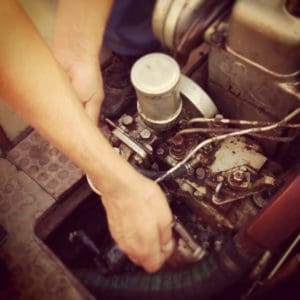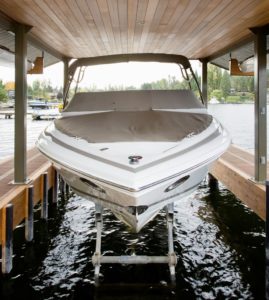Between the sun, salt water and other natural elements, keeping your fiberglass boat clean is a major part of boat maintenance, and knowing how to clean it is imperative for any boat owner. Cleaning can extend the lifespan of your boat, help improve the functionality of its features, and maintain a good resale value when you decide to sell.
No matter if you are an expert skipper or this is your first-ever boat, it’s good to know the steps to successful boat cleaning. Here are some tips for cleaning and caring for your fiberglass boat. These tips coupled with a timely cleaning schedule will keep your boat ready to sail and looking great for years to come.
Cleaning Step by Step
Step 1: Washing
If you want your fiberglass boat to maintain (or regain) its brilliance, washing with soap and water is the best and easiest step to start out with. First, rinse off your boat with warm, clean fresh water. Make sure to use a specialized boat cleaning soap, and always follow the mixing instructions when adding water. Then use a soft brush or sponge to wash off the gelcoat’s surface and rinse one more time with fresh water to remove any leftover dirt or grime.
Lastly, make sure to dry off the surface as best as you can to avoid moisture buildup (which can lead to mildew growth). That being said, if you have pesky mildew stains, you will need specialized soap to get rid of them.
Step 2: Degreasing
After using soap and water, it’s time to degrease. Since soap alone can’t remove all the grease build up you may have, the next step is to use a non-scratching degrease formula. Use this over the surface of your gelcoat with a damp cloth and then rub it off with a microfiber towel. You can also use a spray on degreaser if you choose. This step will make polishing and waxing that much easier and more effective.
Step 3: Time to Polish
The next step after washing and degreasing your fiberglass boat is polishing.
Polish is an abrasive substance that will help smooth out any pitted gelcoat surface. Get a high gloss polish and apply it to a cloth or polishing pad and rub in a circular motion in smaller sections. If you have a bigger boat or want to save on time, you can use an electric buffer with the appropriate attachments to save yourself some elbow grease. When finished polishing, use a microfiber towel to wipe off any excess.
If your boat is oxidised, you may need to use a rubbing compound on it instead. Use a rubbing compound that is made for fiberglass use. Keep in mind all polishes are abrasive and made to smooth pitted surfaces so your gelcoat may wear down your gelcoat with each use, so use less abrasive products if you need.
Step 4: Wax your Fiberglass Boat
Waxing is the important last step to cleaning your fiberglass boat. Applying a coat of wax helps provide a protective coating from UV rays and also improves the gloss of your gelcoat. It is important to not ignore this step as your boat’s gelcoat will be susceptible to sun and water damage after polishing. Follow the instructions implicitly for whichever wax product you choose. You can use the same technique as polishing or waxing. Make sure to allow wax to dry off until it has a hazy appearance and then use a cloth to wipe it away. You should get a smooth and reflective surface staring back at you.
Mistakes You Can Make When Cleaning
The following can cause more issues for your boat in the future, so try to avoid these whenever possible:
- Forgetting to Rinse
- Not Using Wax
- Cutting Corners and Cleaning Too Quickly
- Ignoring Stains on Fiberglass
- Not Protecting Your Gelcoat
Boat Cleaning Safety Tips
Tip #1: Always wear PPE (gloves, goggles, face mask, protective clothing)
Tip #2: Read instructions of all chemicals before use
Tip #3: Know how to use any power tools beforehand
Experience Boating Excellence at Corleone Marinas
At Corleone Marinas, we have 4 locations to make your boating experience even more convenient, fun and easy. The Corleone Marinas Portfolio includes marinas located in Elizabeth Bay, Balmain and Drummoyne; as well as the largest marina on the Hawkesbury River at Long Island.
Our Shipwrights and Marine Mechanics provide a full range of services including cleaning, boat detailing, hull, deck and topside repairs, and surveying for insurance and vessel modifications. We offer the full range of marina services including wet berths, moorings, and slipways for boats up to 60 feet. Our Marinas are managed by some of the industry’s best, with many years’ experience. Contact us to see one of our 4 stunning marinas across Sydney today!






